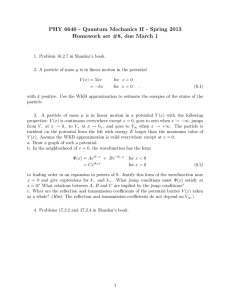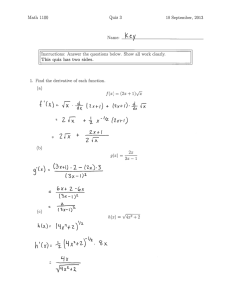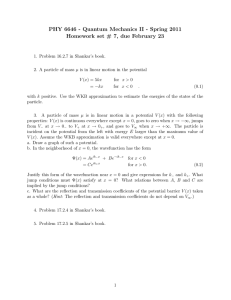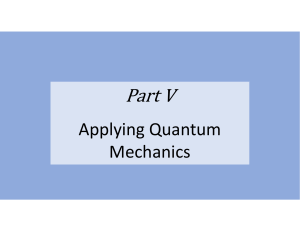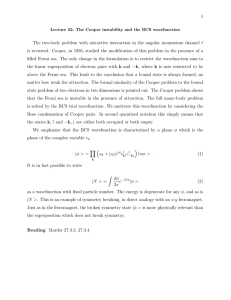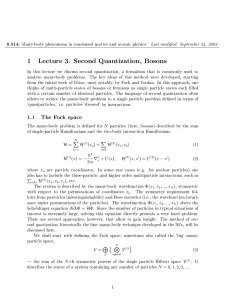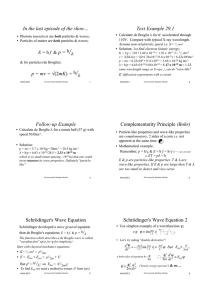6.728 Applied Quantum and Statistical ...
advertisement
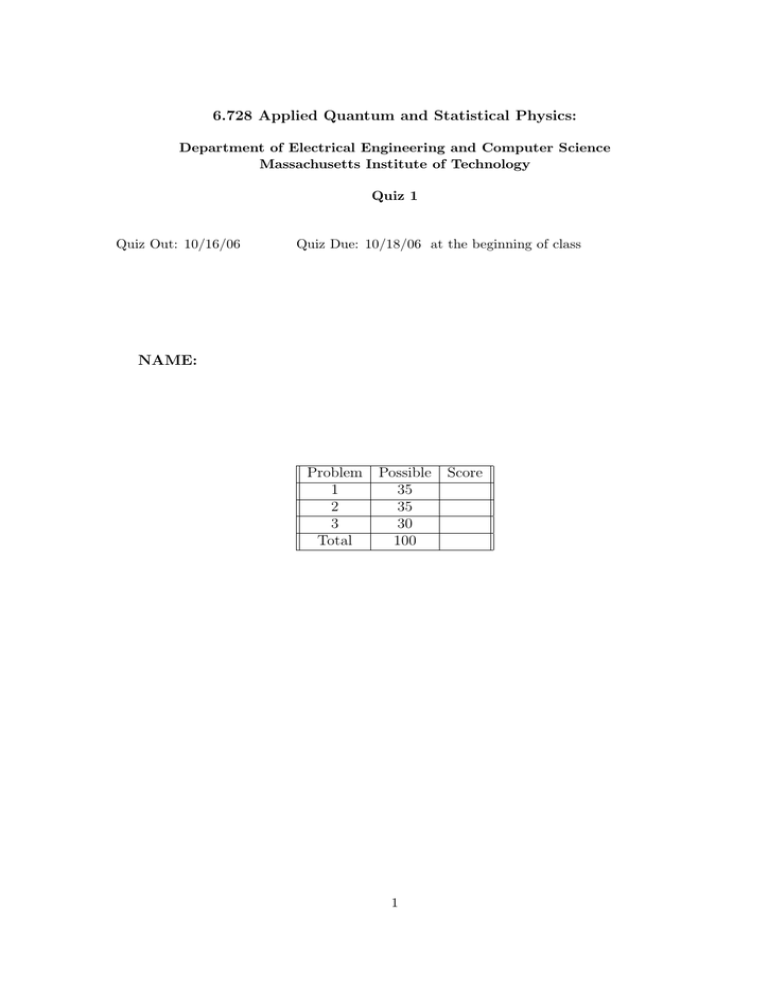
6.728 Applied Quantum and Statistical Physics: Department of Electrical Engineering and Computer Science Massachusetts Institute of Technology Quiz 1 Quiz Out: 10/16/06 Quiz Due: 10/18/06 at the beginning of class NAME: Problem 1 2 3 Total Possible 35 35 30 100 1 Score Problem 1 (35 points) Consider an electron that is incident from the left on the step barrier V (x) where � 0 if x < 0 V (x) = Vo if x ≥ 0 The eigenfunction at a constant energy E can be written as � ik x e 1 + Be−ik1 x if x ≤ 0 ψ(x) = Ceik2 x if x ≥ 0 (a) Explain why the wavefunction ψ(x) has the above form. What are the values of k1 and k2 in terms of E, Vo and fundamental constants? (b) Find the transmitted probability current density, Jtrans (x) in terms of B, C, k1 , k2 and fundamental constants. (c) Find the values of B and C in terms of k1 and k2 . (d) Find the reflection R and transmission T coefficients. (Note you can check that you have the correct answer with the result on page 4 of the formula sheet.) 2 Problem 2 (35 points) Consider the simple harmonic oscillator for a particle with mass m and oscillation fre­ quency ωo . The energy eigenstates are given by the set φn (x) which have eigenenergies En = �ωo (n + 1/2). You are given a wavefunction whose initial state in time is Ψ(x, t = 0) = co φ0 + c3 φ3 (a) What is the wavefunction Ψ(x, t) for all time? (b) What is the probability density of finding the particle at some position x1 as a function of time? (c) What is the expectation value of the Energy �E�? � � � � (d) Find �x�, x2 , and x3 in terms of c0 , c3 and the constants of the system. 3 Problem 3 (30 points) The Hamiltonian H is a function of momentum p and is given by H= p2 + αp 2m where m is the mass of the particle and α is a constant with units of velocity. (a) Use Ehrenfest’s Theorem to find d �x� dt and d �p� . dt (b) Write down Schoedinger’s Equation in x-space for this Hamiltonian. (c) Find the eigenfunctions and eigenenergies. 4
